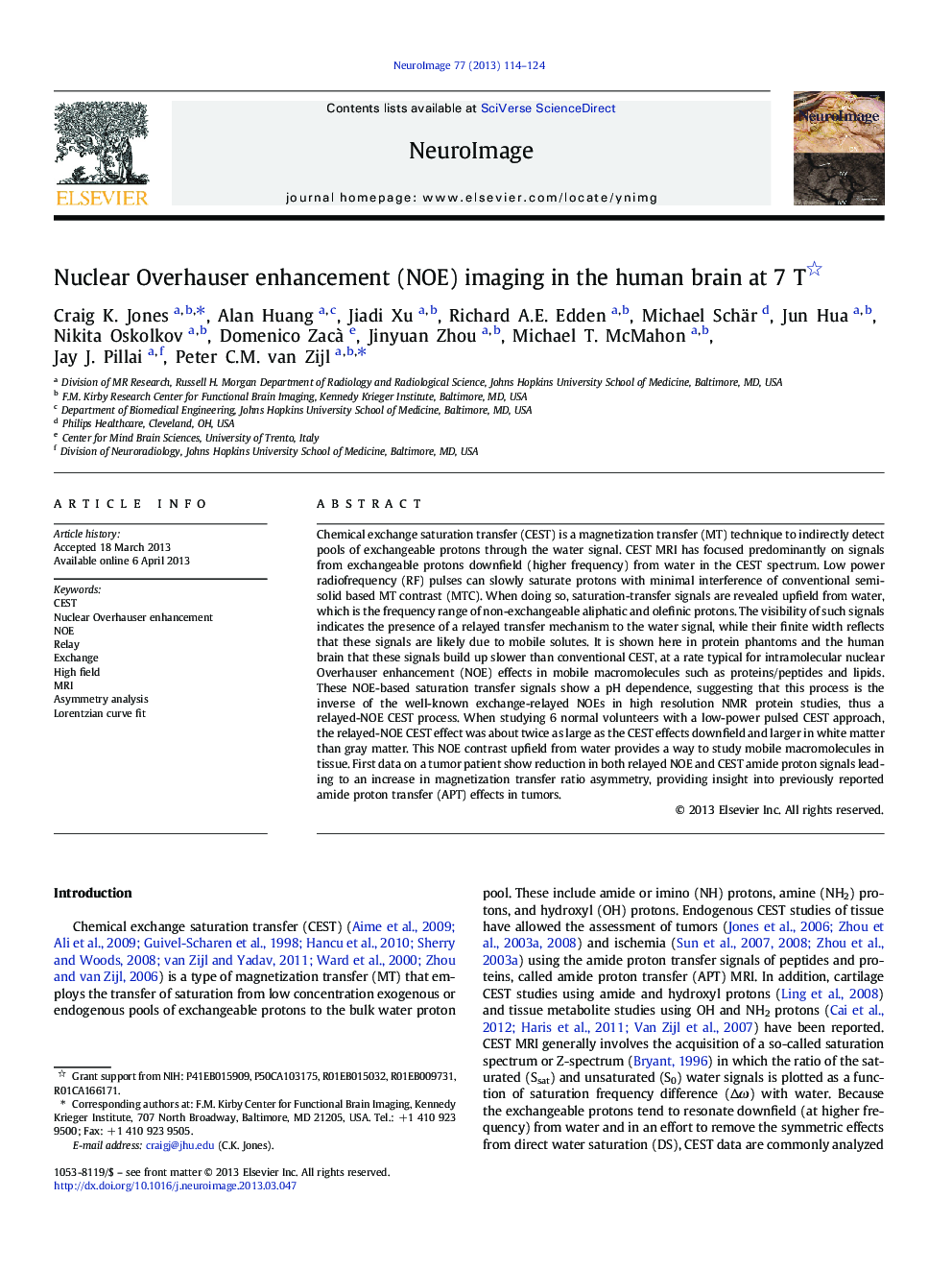| کد مقاله | کد نشریه | سال انتشار | مقاله انگلیسی | نسخه تمام متن |
|---|---|---|---|---|
| 6029591 | 1580927 | 2013 | 11 صفحه PDF | دانلود رایگان |
عنوان انگلیسی مقاله ISI
Nuclear Overhauser enhancement (NOE) imaging in the human brain at 7Â T
دانلود مقاله + سفارش ترجمه
دانلود مقاله ISI انگلیسی
رایگان برای ایرانیان
کلمات کلیدی
موضوعات مرتبط
علوم زیستی و بیوفناوری
علم عصب شناسی
علوم اعصاب شناختی
پیش نمایش صفحه اول مقاله

چکیده انگلیسی
Chemical exchange saturation transfer (CEST) is a magnetization transfer (MT) technique to indirectly detect pools of exchangeable protons through the water signal. CEST MRI has focused predominantly on signals from exchangeable protons downfield (higher frequency) from water in the CEST spectrum. Low power radiofrequency (RF) pulses can slowly saturate protons with minimal interference of conventional semi-solid based MT contrast (MTC). When doing so, saturation-transfer signals are revealed upfield from water, which is the frequency range of non-exchangeable aliphatic and olefinic protons. The visibility of such signals indicates the presence of a relayed transfer mechanism to the water signal, while their finite width reflects that these signals are likely due to mobile solutes. It is shown here in protein phantoms and the human brain that these signals build up slower than conventional CEST, at a rate typical for intramolecular nuclear Overhauser enhancement (NOE) effects in mobile macromolecules such as proteins/peptides and lipids. These NOE-based saturation transfer signals show a pH dependence, suggesting that this process is the inverse of the well-known exchange-relayed NOEs in high resolution NMR protein studies, thus a relayed-NOE CEST process. When studying 6 normal volunteers with a low-power pulsed CEST approach, the relayed-NOE CEST effect was about twice as large as the CEST effects downfield and larger in white matter than gray matter. This NOE contrast upfield from water provides a way to study mobile macromolecules in tissue. First data on a tumor patient show reduction in both relayed NOE and CEST amide proton signals leading to an increase in magnetization transfer ratio asymmetry, providing insight into previously reported amide proton transfer (APT) effects in tumors.
ناشر
Database: Elsevier - ScienceDirect (ساینس دایرکت)
Journal: NeuroImage - Volume 77, 15 August 2013, Pages 114-124
Journal: NeuroImage - Volume 77, 15 August 2013, Pages 114-124
نویسندگان
Craig K. Jones, Alan Huang, Jiadi Xu, Richard A.E. Edden, Michael Schär, Jun Hua, Nikita Oskolkov, Domenico Zacà , Jinyuan Zhou, Michael T. McMahon, Jay J. Pillai, Peter C.M. van Zijl,